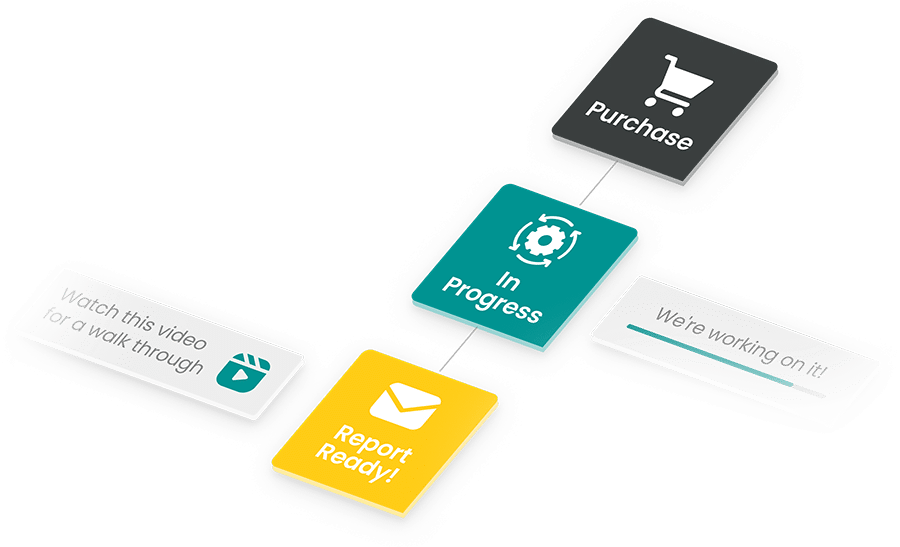If you’ve ever sat through a sales pitch for a shiny new EdTech tool or afterschool program, you’ve probably heard the word “impact” tossed around like glitter at a pep rally. “Transformative impact,” “evidence of impact,” “outcomes-driven impact.” After a while, it all starts to blur. Impact has become one of those buzzwords that sounds good but feels vague, especially if no one can tell you what kind of impact, for whom, or how it was measured. What does impact really mean in K-12 education? This blog breaks it down in simple terms, exploring how teaching, learning, and student outcomes shape real educational progress.
So let’s ask the real question: What does meaningful impact in education actually look like? And how can we tell when something’s working, not just in theory but in the messy, diverse, real-life world of K-12schools?
Spoiler: it doesn’t take a 6-month randomized trial or a PhD in statistics. A thoughtful impact evaluation in education can be quick, low-lift, and incredibly powerful—if it asks the right questions and uses the right tools. That’s where educational impact evaluations come in. These evaluations answer: Is the program helping? Is it helping everyone? And is it worth the investment?
Unlike traditional year-long studies, a rapid-cycle educational program evaluation can leverage the data that school districts already collect—attendance records, behavior incidents, and grade-level benchmarks—to deliver meaningful, contextualized insights in weeks, not semesters. No guesswork. No black box.
And that matters. Because when school districts are choosing between competing software platforms or nonprofits are trying to prove they’re worth funding, the difference between a good guess and a grounded result could mean thousands of students getting better support, or not.
So let’s give the word “impact” its meaning back. Let’s define it, measure it, and use it to make smarter, faster, student-first decisions.
Why Test Scores Don’t Tell the Whole Story
Standardized test scores have been the go-to currency of education for decades. They’re easy to report, relatively simple to compare, and satisfy state and federal accountability boxes. But here’s the problem: test scores offer a narrow snapshot of student performance, and they miss everything else.
Take a moment to think about the last time a test score told you if a student felt safe in class. Or if they came to school regularly. Or whether an intervention helped a newcomer student with limited English feel like they belonged. You won’t find those answers in a bubble sheet.
That’s why relying on test data alone leaves out crucial parts of the story. A good formative assessment in education should be able to show not just where a student is academically, but what supports they need and whether the supports they’re getting are working.
But most assessments don’t go that far—and even when they try, they’re often too disconnected from the daily reality of school life to inform program-level decisions.
A more complete educational impact assessment considers:
- Are the students’standardized assessment scores improving?
- Are absentee rates improving?
- Are behavior referrals going down?
- Are teachers seeing fewer suspensions and higher GPAs?
These are the kinds of questions a program evaluation in education should answer. Because at the end of the day, impact is about performance metricsand growth—academic, emotional, social, and structural. It’s about whether a tool or service makes the learning environment better for everyone.
When districts only measure what’s easy to test, they risk missing what actually matters. A strong impact evaluation fills that gap. It turns the spotlight on the full picture of learning—and gives decision-makers something they can actually use.
What Impact Should Mean in K-12 Education

If we really want to talk about impact in K-12education, we have to stop pretending it means the same thing in every classroom, in every district, for every student. Because it doesn’t. And that’s a good thing.
Real impact is messy. It’s contextual. It’s shaped by the community, the students served, the grade level, and the type of support being offered. So instead of chasing a one-size-fits-all outcome, let’s shift the question: What does impact look like here, for these students, in this moment?
That might be a social-emotional learning (SEL) program that helps reduce behavioral incidents by 30% in an urban middle school. Or a nonprofit tutoring service that boosts confidence and GPA for 9th-grade students on the brink of disengagement. Or an EdTech platform that cuts chronic absenteeism among Title I students by nudging them to log in each morning.
At Parsimony, we’ve seen what this looks like up close.These are the kinds of outcomes that matter. The kind that stakeholders can see, feel, and act on. And they don’t happen by accident. They’re uncovered through targeted impact evaluations of educational interventions and impact evaluations of educational software that meet schools where they are.
True educational impact should always be about student growth, teacher sustainability, and long-term equity. The moment we stop boiling it down to test scores, the more meaningful our progress becomes.
Who Needs to Understand Impact—And Why It Matters
Let’s be honest—”impact” means very different things depending on where you sit. For a district leader juggling budget renewals, a nonprofit hustling for the next grant, or an EdTech rep trying to stand out in a noisy market, the stakes are high. But one thing they all have in common? They need real data. Not fluff. Not guesses. Real, defensible proof.
District Leaders:
You’ve got to make big calls—software renewals, new service contracts, and more—all while proving ROI to your superintendent and board. Snapshot Reports give you an independent educational evaluation that’s quick, clean, and free from internal bias. They’re built to plug into your decision-making cycle without disrupting your workflow. Think of them as your secret weapon for surviving budget season with your sanity intact.
Nonprofits:
Grants don’t win themselves. And neither do long-term school partnerships. If you’re serving students in public schools, your funders want numbers, and districts want reassurance. A third-party education evaluation shows you’re not just well-meaning. You’re effective. With MomentMN Snapshot Reports, you get credible, external validation you can use in grant proposals, board meetings, and community updates.
EdTech Companies:
Districts are (rightfully) skeptical of internal case studies. A shiny pitch deck isn’t enough. But a third-party report showing a measurable impact? That builds trust. It helps with customer retention, expansion, and sales. If you’re not already using independent educational evaluations as a marketing asset, you’re leaving opportunities on the table. This is how you show—not just say—that your product works.
How to Measure Real Impact—Without Breaking Your Team
We’ve all seen those evaluations that come with 200-question surveys, confusing dashboards, and timelines longer than a school year. Yeah—this isn’t that.
MomentMN Snapshot Reports are built for speed, simplicity, and sanity. They’re rapid-cycle educational impact evaluations, which is a fancy way of saying: “We’ll give you answers while the program is still running, not two semesters after you’ve already made your next decision.”
Here’s the secret sauce:
- Fast: Most reports take just a few weeks, not months. Because impact shouldn’t be a mystery until next fiscal year.
- Low-burden: We use the data you already have. No new spreadsheets, no staff surveys, no hours of administrative prep.
- Objective: Snapshot Reports are independent educational program evaluations, meaning they come from a thirdparty with no skin in the game. That makes your results more believable—and a lot more powerful.
And here’s the part that really matters: the process is actually useful. We don’t dump a 40-page PDF on your desk and walk away. Each Snapshot Report is designed to be readable, shareable, and decision-ready. That means you can use it to brief your board, pitch funders, make a renewal decision, or even revise your internal strategy without scrambling for interpretation.
In a time when everyone is stretched thin—districts, nonprofits, and EdTech teams alike—evaluating what’s actually working shouldn’t feel like adding another full-time job. With the right tools, you can get the clarity you need without creating chaos.
Instead of more noise, you get signal. Instead of another task, you get leverage.That’s how evaluation should feel.
Why an Independent Evaluation Is the Game-Changer

Anyone can claim success. But proving it? That’s where things get real—and where most programs quietly crumble under scrutiny.
An independent evaluation doesn’t justsatisfy a grant requirement or check a box for district procurement. Itcuts through noise, politics, and internal bias to get an honest look at what’s working—and what’s not. It creates space for real conversations: What’s effective? What needs to change? Where are we truly moving the needle?
When a district leader sees an impact evaluation of an educational service that shows real gains in student attendance or subgroup engagement, it shifts the conversation. That’s not just a stat for a spreadsheet—that’s a story they can stand behind in front of a board or superintendent. It’s the kind of evidence that accelerates renewals, informs budgets, and builds internal consensus.
When a nonprofit brings funders a well-documented educational program impact evaluation with measurable gains in behavior, GPA, or student well-being, it goes beyond anecdote. It becomes proof of value, which leads to trust, future investment, and deeper partnerships with districts.
And when an EdTech company walks into a sales call with a third-party report—clear, objective, and aligned with real district data—it’s a game-changer. It transforms their pitch from marketing to mission. From “we think it works” to “here’s the proof.”
Independent evaluations give every stakeholder the same powerful advantage: clarity. Not promotional copy. Not hope. Truth. They reveal what’s working, for whom, and why—without hype, guesswork, or ego.
Because in education, we can’t afford to waste time, dollars, or trust on programs that just sound good. We need to invest in what’s proven to work, for the students counting on us to get it right.
The Bottom Line: “Impact” Should Be More Than a Buzzword
“Impact” shouldn’t be a filler word. It shouldn’t be something you throw into a slide deck just to sound strategic. It should mean something. It should do something. In education, where decisions affect thousands of students—and where budgets are tight and scrutiny is high—“impact” should be measurable, visible, and worth trusting.
If we’re serious about student success, we have to look beyond standardized scores and start asking better questions. Are students showing up more consistently? Are multilingual learners or students with IEPs engaging more deeply? Are teachers better equipped to deliver the curriculum because of a new support tool? These aren’t fringe questions. They’re core to understanding what’s working.
Every decision-maker—district leaders, nonprofit directors, EdTech founders—wants to believe their work is making a difference. But hope and belief aren’t enough. What they need is proof. Real proof.
And that’s where a rapid-cycle, independent educational evaluation becomes a game-changer. It tells you what’s effective now, not a year from now, using the data you already collect. It strips away fluff, simplifies the process, and brings decision-ready insight to the surface.
Whether you’re trying to justify a budget renewal, secure a grant, or convert a pilot program into a district-wide implementation, a MomentMN Snapshot Report gives you a fast, trustworthy way to measure and demonstrate your educational program’s impact.
Because impact shouldn’t just sound good in theory. It should be clearly visible today for the students who need it most. Want to know if your program or product is really working?
A MomentMN Snapshot Report delivers fast, credible answers—without overloading your team. Get a sample report and a custom walkthrough video to see how it works in action.




